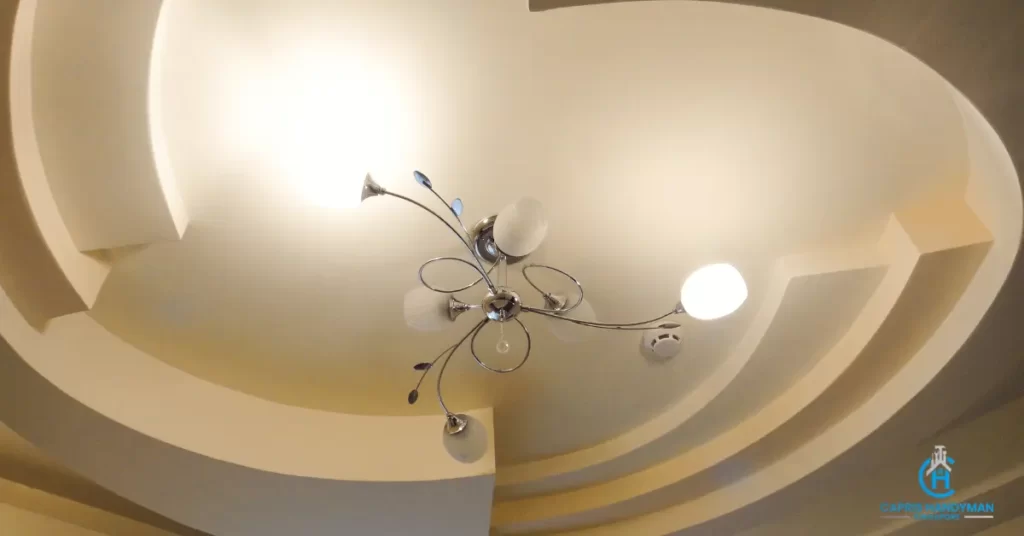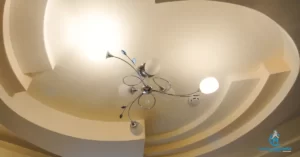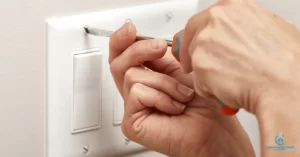Choosing the right ceiling board can make all the difference when it comes to finishing a home renovation or constructing a new property. From functional to aesthetic, the type of ceiling board you select can have a significant impact on your home’s overall look and feel.
In Singapore, homeowners have access to a range of ceiling board options, each with its own unique advantages. In this blog post, we’ll explore the different types of ceiling boards commonly used in Singapore homes, helping you make an informed decision about which option is best for your specific needs and preferences.
Whether you’re looking for a budget-friendly or a high-end look, we’ve covered you with all the information you need to choose the right ceiling board for your home.
Table of Contents
Importance of Ceiling Boards
A proper roof is essential to any residential or commercial building, serving as the topmost layer of protection from elements such as wind, temperature, sun, snow, and rain. But the bottom of the roof also provides an opportunity to showcase creativity through the use of decorative ceiling boards.
Ceiling boards not only enhance the aesthetic appeal of a space, but they also offer various functional benefits. They provide better acoustics, allowing for optimised sound control and minimising unwanted noises. It also offers a space for housing electrical wires, pipes, and air conditioning ducts.
Moreover, ceiling boards can reflect and diffuse light, reducing the requirement for artificial lighting and saving energy. They also offer fire safety and moisture resistance features.
In conclusion, a well-planned ceiling board enhances both form and function, providing a more pleasant and efficient working environment. They are available in various types and materials, each offering unique features to suit specific needs and designs.
Types of Ceiling Boards
Because of advances in construction technology, there are currently several varieties of ceiling boards to pick from. Let’s look at some of the most popular ceiling types on the market:
Gypsum Ceiling Board:
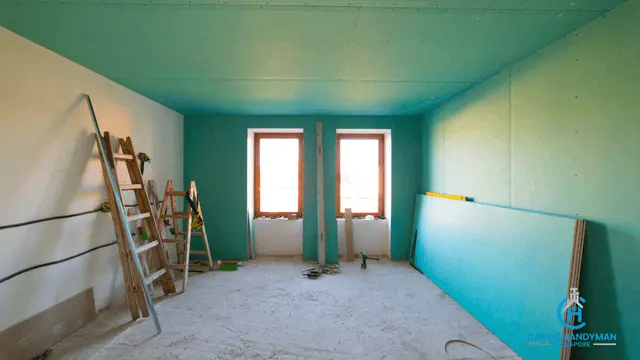
Because of their variety, ease of installation, and durability, gypsum ceiling boards are a popular choice for many homeowners and building contractors. These boards, which are made of gypsum plaster and reinforced with paper or fibreglass, are great for producing smooth, seamless ceilings that may be painted or wallpapered to complement the design of a room.
Gypsum boards are also fire-resistant and serve to provide insulation, making them an excellent choice for fire-prone homes and buildings. They are also simple to cut and shape, making them ideal for custom projects and unique ceiling designs.
One of the most significant advantages of employing gypsum ceiling boards is their adaptability. They can be employed in a variety of settings, including residential residences, business buildings, schools, and hospitals.
However, it may not be ideal for high-humidity environments such as bathrooms. In such instances, it is best to contact the manufacturer to find an appropriate model that is resistant to moisture. One alternative is to use a gypsum board with a moisture-preventive compound or a vinyl PVC coating to keep the ceiling from warping in damp areas.
Benefits of Installing Gypsum Ceiling Board:
- Gypsum boards have fire-resistant properties, making them a safer option for your home.
- These are able to absorb sound, making them an effective solution for reducing noise levels in a room.
- Offering a variety of design options and shapes to choose from.
Drawbacks of Gypsum Ceiling Board:
- Gypsum boards are not recommended for damp environments, as they are prone to moisture damage and can deteriorate over time.
- It can be difficult to recycle, leading to potential waste and contribution to landfills.
Wood Ceiling Board:
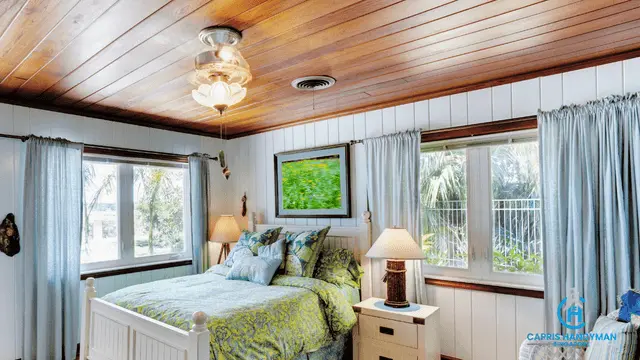
This type of ceiling board is a great option for those looking to add a natural touch to their interiors. Made from wood fibre or solid wood, these boards offer a warm and inviting feel that can improve the look and feel of any room.
In terms of sustainability, wood ceiling boards are an environmentally friendly option. They are made from renewable resources and can be recycled or reused at the end of their life cycle. This makes them a great choice for those looking to reduce their carbon footprint.
Another advantage of wood ceiling boards is their insulation capabilities. Wood is a natural insulator and can help to regulate temperature and reduce noise levels in a room.
These boards are a versatile option that can be utilised for both interior and exterior applications, offering a classic and natural look. However, they are not naturally resistant to termites, rot, or the elements and can be prone to warping, swelling, and bending over time. To mitigate this it’s important to install wooden boards with proper spacing, which allows room for natural expansion and contraction.
This is particularly crucial for exterior applications that are regularly exposed to rain and sunlight. By following these best methods, you can help to preserve the longevity and appearance of your wooden ceiling boards.
Benefits of Installing Wood Ceiling Board:
- Wood is an excellent insulator; thus, it helps to keep the room warm.
- The natural colour of the wood adds to the beauty of the room.
- There are numerous species, colours, and finishes to choose from.
Drawbacks of Wood Ceiling Board:
- Wood can decay or peel away when exposed to wet conditions.
- Not as fire-resistant as alternatives like fibre cement or gypsum boards.
Fibre Cement Ceiling Board:
Fibre cement ceiling boards are a popular option for those looking for a long-lasting, moisture-resistant, and fire-resistant ceiling solution. These boards are noted for their strength and capacity to survive adverse weather conditions since they are made from a cement and fibre blend.
Fibre cement boards are heavier than gypsum boards, but they are more moisture resistant and can be utilised in damp locations like bathrooms. These boards are extremely strong and will not bend, rot, or swell, making them suitable for indoor and outdoor use.
Fibre cement ceiling boards are stronger and more impact resistant than typical gypsum ceiling boards. As a result, they are a long-lasting and durable alternative for ceiling applications in both dry and damp conditions.
Furthermore, utilising polymer-modified cement, fibre cement boards may be made in thin sheets, making them appropriate for curved applications.
Benefits of Installing Fibre Cement Ceiling Board:
- Fibre Cement Ceiling is resistant to fire and the elements, providing added protection and peace of mind.
- It is not susceptible to mould, mildew, or breakdown, even in the presence of leaks and moisture, making it an excellent choice for damp locations.
Drawbacks of Fibre Cement Ceiling Board
- Heavier than gypsum and plasterboard, making installation more difficult.
PVC Ceiling Board:
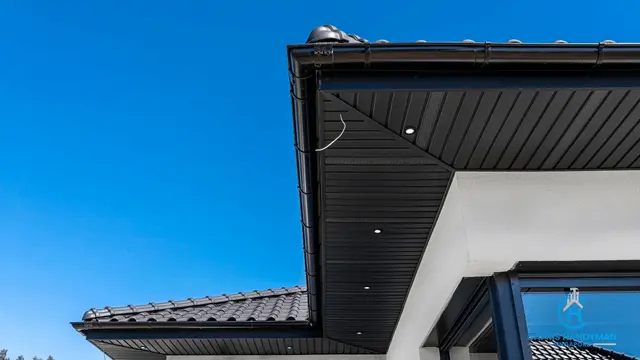
PVC ceiling boards are a low-cost option for both interior and exterior projects. They are lightweight, simple to install on a flat surface, and available in a variety of designs, such as ornamental brass and sculpted plaster of Paris finishes. Furthermore, PVC ceiling boards are available in sleek, modern forms that highlight the material. Interlocking panels can also be used to give a modern look.
Water resistance is one of the primary benefits of PVC ceiling boards. As a result, they are ideal for use in bathrooms, kitchens, and other high-moisture locations where standard ceiling materials may fail. PVC ceiling boards give a cost-effective and versatile solution whether you want a traditional or stylish look.
Benefits of Installing PVC Ceiling Board:
- PVC ceilings are known for their durability and longevity, able to withstand the test of time without showing significant marks of wear and tear.
- In terms of cost, PVC ceiling boards offer a more budget-friendly alternative to traditional materials.
- Anti-fungal, resistant to corrosion, easy to clean, termite-proof, and waterproof.
Drawbacks of PVC Ceiling Board:
- The joint lines between each panel can detract from the aesthetic appeal of the ceiling, making it less appealing for some applications.
- PVC products can release harmful chemicals into the environment during production and disposal, contributing to environmental pollution.
Metal Ceiling Board:
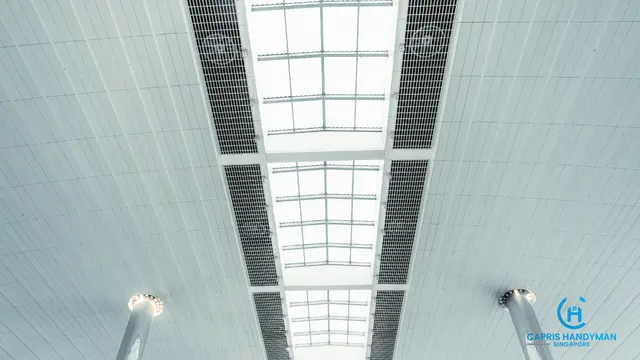
Metal ceiling boards are a popular choice for their durability and aesthetic appeal. From aluminium to galvanised iron, metal can be found in tiles, planks, and panels to suit a variety of design needs. Metal ceiling boards offer a contemporary, industrial look that can enhance the beauty of your home’s interior.
Installation is relatively straightforward, and the panels can be easily removed and reattached, making it simple to access concealed components for maintenance or repair. This helps to keep construction and repair costs low, making metal ceiling boards a practical choice for your home.
Benefits of Installing Metal Ceiling Board:
- Enhance the worth of your home with a durable and visually appealing metal ceiling. Metal tiles boast a long lifespan, making them a great investment for your property.
- They also eliminate the need for frequent maintenance and repairs, thanks to their resistance to peeling.
- Safety is of utmost importance, and metal ceilings offer fire resistance, giving you peace of mind.
Drawbacks of Metal Ceiling:
- The main disadvantage of metal ceilings is the cost of genuine materials, as well as the expense of a protective coating to prevent corrosion. While faux tin tiles may be more affordable, they lack the durability and longevity of genuine metal tiles.
Consider the Following When Choosing Ceiling Boards
When choosing the best ceiling boards for your home, it’s important to keep in mind the following factors:
- Moisture Resistance: Ceiling boards in damp areas such as bathrooms or kitchens need to be able to withstand moisture. Make sure the materials you choose are moisture-resistant or can be treated to resist it.
- Aesthetic: You can achieve various ceiling styles with different ceiling board materials and methods. If you want a specific ceiling look, but it’s outside of your budget, consider alternative options that can give a similar appearance.
- Ventilation: Even water-resistant ceiling materials in bathrooms need proper ventilation. Make sure to run the ventilation fan as needed or install one if necessary.
- Cost: PVC is a cost-effective option, but it’s a good idea to try it in a smaller room first to make sure you’re happy with how it looks before incorporating it into larger spaces.
Frequently Asked Questions (FAQ’s)
What is POP Ceiling?
Ceilings made of POP (Plaster of Paris) are a popular choice for modern interiors. It is comprised of the building material Gypsum and is also known as a dropped or second ceiling. This tough material is used to coat walls and ceilings as well as to create complicated architectural designs. When utilised, POP is created as a dry powder that is combined with water to form a paste.
Is Plywood a Good Choice for Ceilings?
Plywood is very strong and lightweight, which makes it perfect for a ceiling. The only difference is plywood is cut in thin sheets, while ceiling panels are thick. But a ceiling using plywood does not have to be weak or flimsy because the glue that binds the sheets is stronger than the wood itself.

